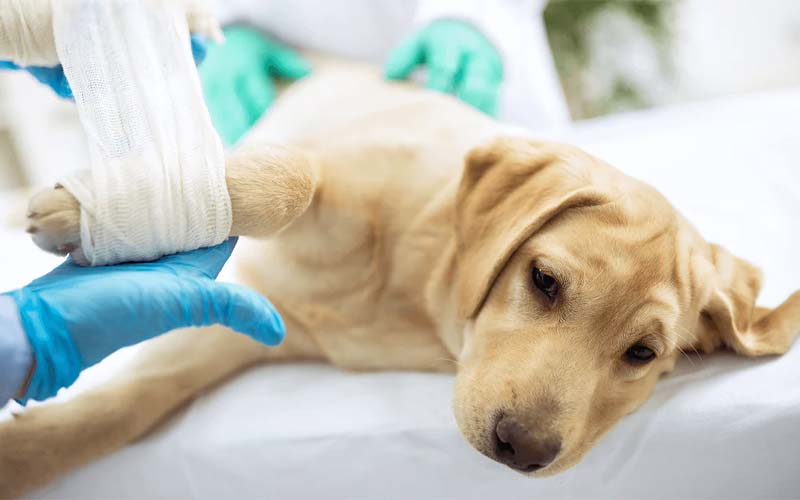Elbow dysplasia is a prevalent orthopedic condition that affects many dogs, causing discomfort and mobility issues. Understanding this condition is crucial for dog owners to recognize the signs and seek appropriate veterinary care. In this article, we will delve into the causes, symptoms, and treatment options for elbow dysplasia in dogs, providing valuable insights into the well-being of our beloved four-legged companions.

1. Causes of Elbow Dysplasia
Elbow dysplasia is primarily caused by a combination of genetic and environmental factors. Large and giant dog breeds, such as Labrador Retrievers, Golden Retrievers, and German Shepherds, are particularly susceptible. The condition occurs when the bones in the elbow joint develop abnormally, leading to improper alignment and joint instability.
Several factors contribute to the development of elbow dysplasia, including:
- Genetic Predisposition: Genetic factors play a significant role in the occurrence of elbow dysplasia. It can be inherited from one or both parents, making it essential to consider the health history of a dog’s lineage before breeding.
- Rapid Growth: Dogs that experience rapid growth during their early months are more prone to developing elbow dysplasia. Nutritional imbalances and excessive weight gain can place additional stress on the developing joints, increasing the risk.
- Trauma: Injuries or repetitive stress on the elbow joint, especially during the growth phase, can lead to the development of dysplastic changes.
2. Symptoms of Elbow Dysplasia
Identifying the symptoms of elbow dysplasia is crucial for early intervention and treatment. Common signs include:
Lameness: Dogs affected by elbow dysplasia may exhibit a mild to severe lameness, especially after exercise or extended periods of rest.
Stiffness: Joint stiffness, particularly in the front legs, is a noticeable symptom. Dogs may struggle to rise, climb stairs, or engage in physical activities they previously enjoyed.
Pain and Discomfort: Dogs with elbow dysplasia often experience pain and discomfort, which may manifest as a reluctance to be touched or a noticeable change in behavior.
Swelling and Joint Effusion: The affected elbow joint may become swollen, leading to visible swelling or fluid accumulation.

3. Treatment Options for Elbow Dysplasia
Once diagnosed, various treatment options can help manage elbow dysplasia and improve your dog’s quality of life. These may include:
- Medications: Non-steroidal anti-inflammatory drugs (NSAIDs) can help alleviate pain and inflammation associated with elbow dysplasia. Your veterinarian may prescribe these to provide relief.
- Weight Management: Maintaining a healthy weight is crucial for dogs with elbow dysplasia. Reducing excess weight can help alleviate stress on the joints and improve mobility.
- Physical Therapy: Physical therapy and controlled exercise regimens can aid in strengthening the muscles around the affected joint, improving stability and mobility.
- Surgical Intervention: In severe cases, surgical procedures such as arthroscopy, joint replacement, or osteotomy may be recommended to correct the abnormalities and restore joint function.
Conclusion
Elbow dysplasia is a common orthopedic condition that affects many dogs, particularly large and giant breeds. By recognizing the causes, symptoms, and available treatment options, dog owners can ensure early detection and seek appropriate veterinary care. Remember, regular check-ups, a balanced diet, and controlled exercise can significantly contribute to the overall well-being of your furry friend. If you suspect your dog may be suffering from elbow dysplasia, consult with a veterinarian for a proper diagnosis and personalized treatment plan. Together, we can help our canine companions lead happy and healthy lives.